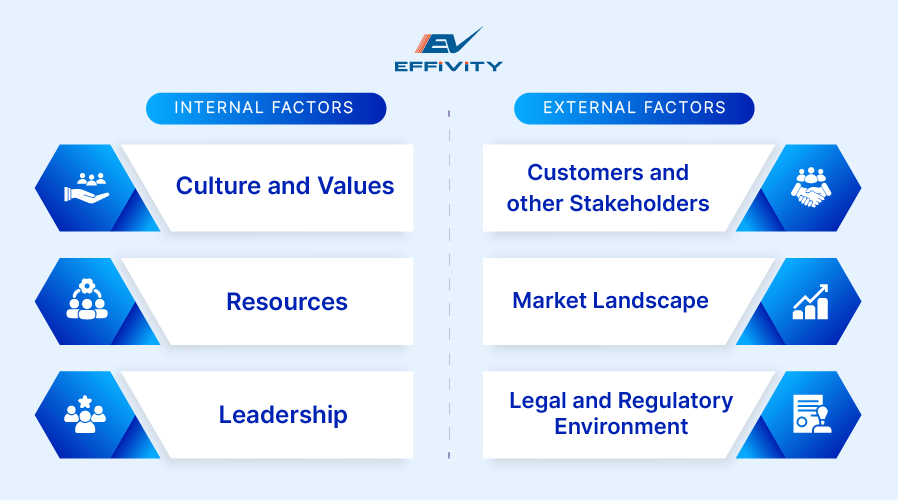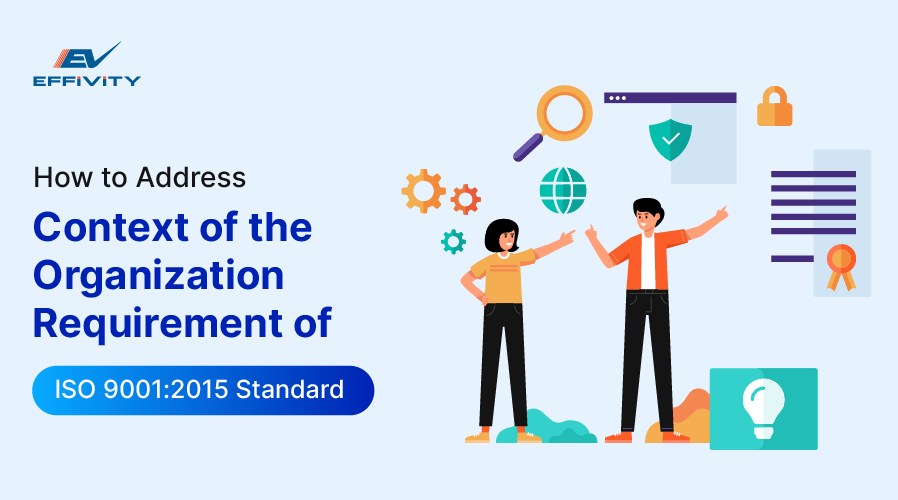The ISO 9001:2015 standard is fundamental for organizations looking to meet their quality objectives in compliance with international regulations. In doing so, it is important for such organizations to thoroughly understand the various requirements of the ISO standard to implement the QMS and to adopt robust QMS software that will streamline quality management.
Within the ISO 9001 standard, the 2015 revisions brought about some drastic changes to the standard requirements, such as extensive risk management, leadership and context of the organization.
The new requirement for the context of the organization requires businesses to consider internal and external challenges that can impact their QMS planning and objectives. However, given that the requirement can seem vague, many organizations might struggle to understand and address it effectively for ISO 9001 compliance.
Here, we'll understand clause 4 of the ISO 9001 standard and know how to address the context of the organization promptly.
What is the Context of Organization in ISO 9001 Standard?
Clause 4 of the ISO 9001:2015 outlines the requirements for the "Context of Organization", which involves evaluating the organization and its context.
In simpler words, businesses need to define how different internal and external elements influence the organization and, by extension, its QMS processes. Setting context is important for any business to know how various factors will impact the QMS goals and objectives, the flow of processes, the complexity of products, customers and so on.

Internal factors are the characteristics of the company, including-
1. Culture and values
The company culture, structure and core values determine how the company operates and ensures quality in its processes.
2. Resources
The availability of various resources, such as infrastructure, finances, technology and human resources, can impact how the company defines its quality objectives.
3. Leadership
The involvement and leadership of the top management are crucial for the implementation and success of the quality management system.
On the other hand, external factors are issues that affect the company and its QMS objectives from the outside. These include-
1. Customers and other stakeholders
Companies need to identify customer’s needs to improve the products and services and meet their expectations.
2. Market landscape
The market dynamics, industry trends and competition can help organizations analyse their operations and focus on quality to improve market standing.
3. Legal and regulatory environment
The changing legal and regulatory environment can impact their processes. It is important to stay updated and ensure compliance for continued success.
How to Address the Context of Organization?
Clause 4 of ISO 9001:2015 outlines how an organization should determine the external and internal factors that can impact its objectives, risks and overall quality management system. This requirement ensures that the QMS isn't treated as a stand-alone process but is customized to align with the business's environment.

1. Analyzing the internal environment
Understanding the internal environment is critical to aligning your QMS with the realities of your organization. Internal factors refer to those within the company that can influence its performance, resources and operations.
Conducting a thorough internal analysis helps identify strengths and weaknesses that could impact your ability to meet quality management objectives. This can be accomplished using SWOT (Strengths, Weaknesses, Opportunities and Threats) analysis and PESTEL analysis to examine how the processes, human resources, operations, management and other internal factors align with the ISO 9001:2015 implementation.
2. Determine the external environment
External factors are equally important and must be carefully considered when addressing the context of the organization. These include elements outside the business that could influence its operations and strategic direction.
By monitoring these external influences, organizations can adapt their QMS to reflect the broader environment in which they operate, ensuring flexibility and continuous improvement. Analyzing external conditions allows businesses to anticipate risks and leverage opportunities that may arise.
3. Identify the interested stakeholders
Identifying interested stakeholders is a vital aspect of ISO 9001:2015 Clause 4.2. Stakeholders are individuals or groups that can affect or be affected by your organization's quality management efforts.
Key interested stakeholders include:
-
Customers
Customers are the primary focus of any QMS, as their satisfaction is central to quality objectives. -
Suppliers
Their performance impacts your ability to deliver products or services. -
Employees
A motivated and skilled workforce is essential to achieving quality outcomes. -
Regulatory bodies
Compliance with laws and standards is critical to maintaining business integrity. -
Shareholders or investors
Their interests may influence strategic decisions and long-term planning.
4. Determine the needs of stakeholders
Once stakeholders have been identified, the next step is determining their specific needs and expectations. Understanding these needs is crucial to shaping a QMS that delivers value and complies with ISO 9001:2015 requirements.
This can include engaging stakeholders through communication, feedback mechanisms and thorough research to identify how they influence and are influenced by the quality management system.
Consider asking yourself these questions when determining the requirements of various stakeholders within the context of your organization-
- What are your customers quality expectations for your products or services?
- Are sufficient resources, training and support available to employees to foster continuous improvement?
- How do your suppliers capabilities align with your quality goals?
- Are your long-term strategic decisions in line with the quality management principles?
- What legal and compliance obligations must your organization meet?
These stakeholders, from customers and suppliers to employees, add value to the organization's operations. So, documenting and addressing their needs will help organizations develop a quality management system that is compliant and ensures higher customer satisfaction, regulatory compliance and operational efficiency.
5. Document
Once you've determined the context of your organization in terms of internal and external factors and stakeholders, it's time to document everything. This will allow you to revisit it when implementing a quality management system. It is also important to choose a suitable document format, such as using QMS software to document the information digitally.
This will not only ensure easy access for relevant stakeholders but also bring transparency and consistency in how the organization meets ISO 9001:2015 requirements.
Wrapping Up
Addressing the context of the organization as required by ISO 9001:2015 is a comprehensive process that involves analyzing internal and external factors and identifying and understanding the needs of stakeholders.
Setting the organizational context will allow you to implement a robust, responsive, efficient quality management system. Further, regular reviews of the organizational context can ensure that the QMS remains aligned with changing conditions, driving success in quality management.






























